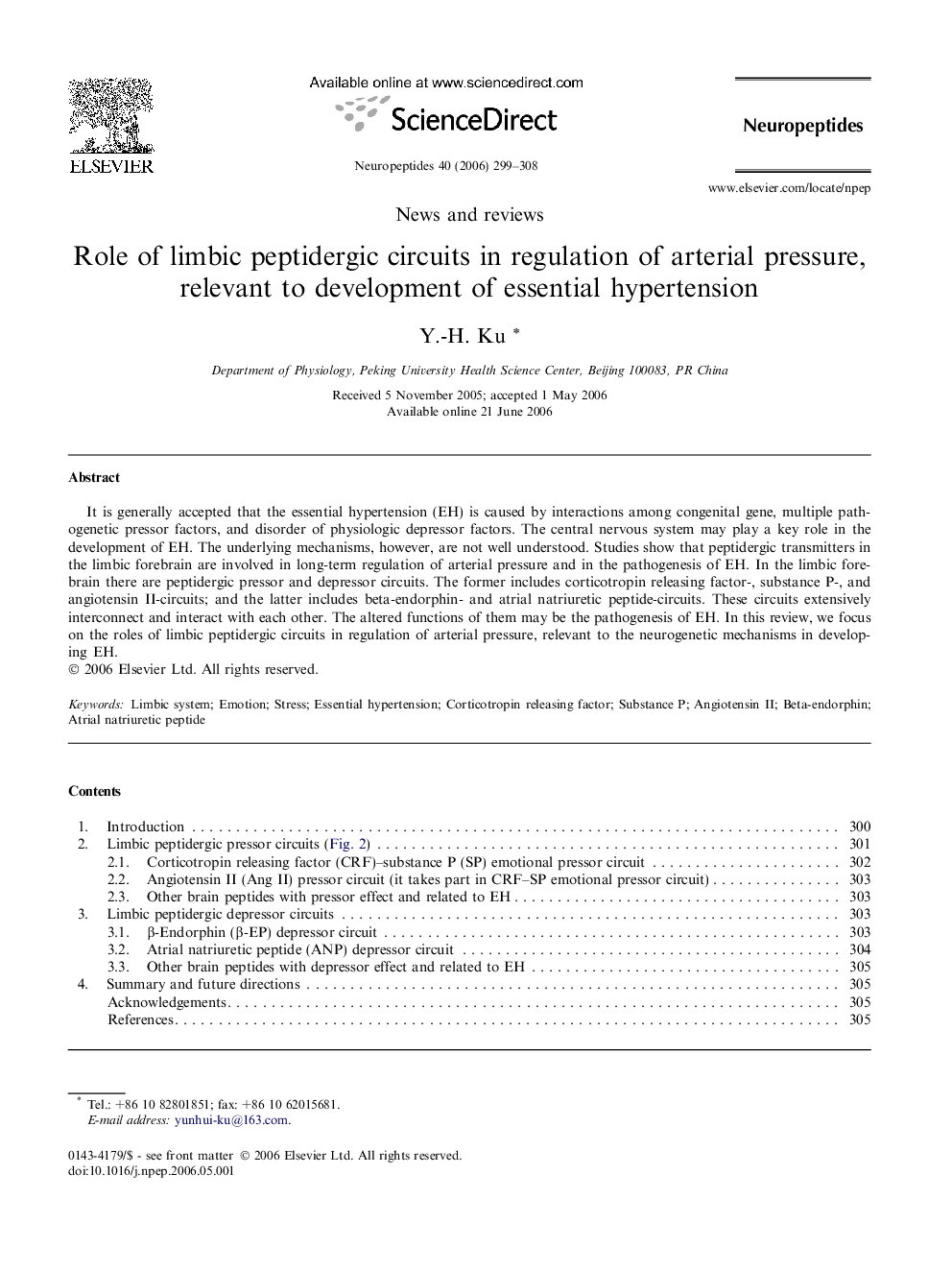| Article ID | Journal | Published Year | Pages | File Type |
|---|---|---|---|---|
| 2808697 | Neuropeptides | 2006 | 10 Pages |
It is generally accepted that the essential hypertension (EH) is caused by interactions among congenital gene, multiple pathogenetic pressor factors, and disorder of physiologic depressor factors. The central nervous system may play a key role in the development of EH. The underlying mechanisms, however, are not well understood. Studies show that peptidergic transmitters in the limbic forebrain are involved in long-term regulation of arterial pressure and in the pathogenesis of EH. In the limbic forebrain there are peptidergic pressor and depressor circuits. The former includes corticotropin releasing factor-, substance P-, and angiotensin II-circuits; and the latter includes beta-endorphin- and atrial natriuretic peptide-circuits. These circuits extensively interconnect and interact with each other. The altered functions of them may be the pathogenesis of EH. In this review, we focus on the roles of limbic peptidergic circuits in regulation of arterial pressure, relevant to the neurogenetic mechanisms in developing EH.
